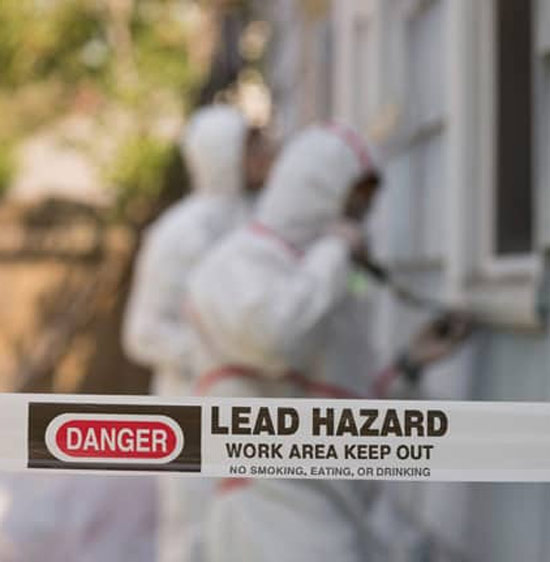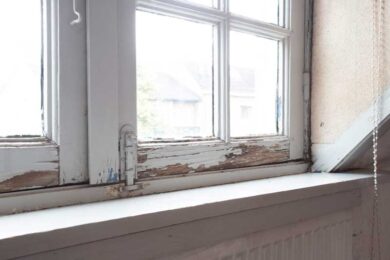Relied On Lead Paint Removal Company-- NYC's Premier Lead Reduction Service
Relied On Lead Paint Removal Company-- NYC's Premier Lead Reduction Service
Blog Article
Ideal Practices for Making Sure Safe and Comprehensive Lead Offense Reduction
Addressing lead violation abatement requires a multi-faceted strategy to ensure both safety and conformity. It's the last clearance procedure, entailing detailed examinations and research laboratory screening, that genuinely verifies a lead-free atmosphere, guaranteeing long-lasting security. How do these practices adjoin to assure detailed lead abatement?

First Analysis
Carrying out a preliminary evaluation is a vital very first step in lead violation reduction. This stage includes a comprehensive assessment of the building to recognize the existence, degree, and certain places of lead-based risks. Certified experts, such as licensed lead assessors or take the chance of assessors, ought to perform a thorough website inspection, using devices like X-ray fluorescence (XRF) analyzers to precisely detect and determine lead focus in paint, dust, dirt, and water.
The analysis should additionally include a testimonial of the building's background, previous reports, and any kind of complaints or health and wellness concerns reported by passengers - Lead Removal Contractors. Recording the findings diligently is vital, as these documents form the basis for creating an effective reduction technique. A comprehensive assessment also includes tasting and laboratory evaluation, which are crucial to validate the presence of lead and overview subsequent actions
In addition, it is essential to connect the results transparently to all stakeholders, including homeowner, occupants, and regulatory authorities. By making certain that the initial analysis is performed with precision and roughness, professionals can lay a strong foundation for a targeted and efficient lead abatement process, inevitably protecting public wellness and ensuring conformity with governing requirements.
Correct Containment
Appropriate control is important to protect against the spread of lead impurities throughout abatement activities. Properly taking care of control minimizes the risk of lead dust and particles moving to non-work areas, thereby safeguarding both the atmosphere and individuals outside the instant work area. To accomplish correct containment, an impermeable obstacle of plastic bed linen have to be established around the work area, making sure all joints and edges are firmly sealed. Lead Removal Contractors. This obstacle should extend from flooring to ceiling and be taped to stop any type of leakages.

Normal assessments of the containment location are essential to look for breaches or weak points in the barrier. Any kind of determined concerns need to be promptly resolved to maintain the integrity of the control. By adhering to these practices, abatement tasks can successfully control lead contamination and minimize connected health risks.
Worker Defense
Guaranteeing worker defense is vital during lead abatement tasks to prevent occupational exposure to hazardous lead bits. Necessary steps include making use of individual safety tools (PPE) such as respirators, handwear covers, and full-body matches particularly made to block lead dust and fumes. Employees should undergo extensive training on the right use and upkeep of PPE, including fit testing for respirators to ensure maximum efficiency.
Engineering controls, such as regional exhaust ventilation systems, are essential in reducing air-borne lead concentrations in the workplace. Management controls ought to also be executed, consisting of restricting the duration of exposure and turning employees to minimize private exposure times. Routine medical security and organic surveillance are important for very early detection of lead absorption, enabling timely treatment and therapy.
Additionally, developing a decontamination method is crucial. Employees have to comply with rigorous decontamination procedures prior to find more information breaks and at the end of their shift to stop lead dirt from being lugged outside the workspace. This consists of extensive hand and face washing with lead-specific cleaner and altering out of infected garments.
Meticulous Cleaning
Preserving a secure workplace expands past worker security and incorporates careful cleaning to ensure lead particles are extensively removed from the site. The procedure of thorough cleanup is essential in protecting against the recontamination of the mellowed out area and protecting both present and future passengers.
To attain a thorough cleaning, all workspace have to be systematically sanitized. This entails the usage of specialized HEPA (High-Efficiency Particulate Air) vacuum cleansers and wet-wiping techniques to capture and get rid of fine lead dust that may have worked out on surface areas. It is necessary to clean all horizontal surfaces, including floorings, home window sills, and counter tops, along with vertical surface areas that may have trapped lead fragments.
Workers must put on proper personal protective tools (PPE) throughout cleanup to avoid direct exposure to residual lead dust. Utilized cleansing materials such as wipes, sponges, and wipe heads should be disposed of in conformity with contaminated materials disposal policies.

Last Clearance
Last clearance is the crucial wrapping up phase of lead reduction that establishes whether the site is risk-free for reoccupation. This critical step involves detailed inspection and testing to validate that all lead risks have actually been successfully eliminated.

Final clearance screening not just safeguards future residents but additionally makes sure conformity with regional, state, and government guidelines. It serves as a recorded validation of the reduction service provider's adherence to market ideal practices. Making sure a detailed and effective last clearance is vital in protecting public health and wellness and cultivating count on the abatement procedure.
Final Thought
Making certain safe and detailed lead infraction reduction demands a complex approach encompassing initial assessments with innovative detection approaches, effective control strategies, rigorous worker security methods, and thorough cleanup procedures. The final clearance phase, including thorough examinations and lab testing, is vital to confirm compliance with EPA criteria. Adherence to these best practices assures a risk-free environment for passengers, alleviates health and wellness threats, and other maintains regulatory requirements, thereby promoting public health and wellness and safety and security in lead-affected locations.
Report this page